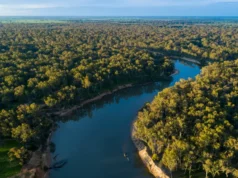
For Malcolm and Diana Hackett, Black Saturday was heralded by a towering column of smoke rising behind Mt Sugarloaf. It was 11am on February 7, 2009 and the couple watched from their 100-year-old weatherboard farmhouse in Strathewen, a rural community 45km north-east of Melbourne, at the foot of the Kinglake escarpment. By late afternoon hot bark was falling from the sky as spot fires rained down off the mountain with a sudden ferocity few were prepared for.
Malcolm and Diana tried to douse the embers but the heat from burning tree roots melted the underground pipe for their water tank, cutting their water supply. Embers collected against a window frame and flames spread to the roller blinds and into the roof cavity. Diana fled to her car with one of their dogs, Hermione, while Malcolm searched the burning house for their other dog, Harry. He crawled under the smoke layer filling the rooms, calling Harry’s name, expecting the ceiling to cave in at any time. Eventually he had to get out and save himself.
Malcolm and Diana somehow survived the day, but 27 people in Strathewen – about an eighth of the population – did not. Some 173 people died in Australia’s worst ever bushfire disaster, more than 130 of them in or around their homes. In Strathewen alone 80 out of 120 houses were destroyed. Many people spent their last moments in terror, sheltering in their bathrooms. Thirteen years and multiple bushfire disasters later, the question remains: can we create truly bushfire-proof homes? It seems a simple idea but the answer is far from straightforward…
Read the full story in the Weekend Australian Magazine


